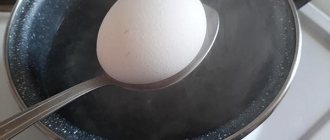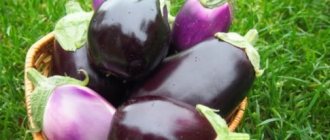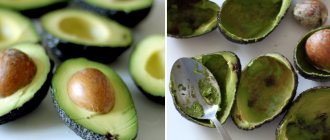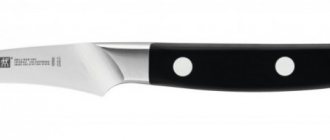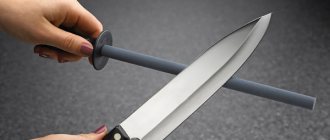Home Nutrition Useful tips
The benefits of different methods of peeling vegetables and fruits are obvious: the correct method helps save time and preserve more fruit, because some of the fruits and vegetables sometimes remain on the skin, which we later throw in the trash. Kiwi is a fruit that has earned its love with an abundance of beneficial properties and vitamins for the human body.
Kiwi comes from China. And a similar name with the famous kiwi bird appeared thanks to the breeder A. Ellison, who found an incredible external similarity between them.
Kiwi has the finest taste; their pulp contains a large composition of fiber, amino acids, glucose, and fructose. They are rich in vitamin C, E, PP, A, B1, B2, I3, B6. It has an enviable ratio of useful substances, such as iron, potassium, calcium, magnesium, phosphorus, folic acid. And the optimal proportions of vitamins C, E and A make kiwi a fruit that provides antioxidant properties. That's why every slice of kiwi is so important.
Kiwi pulp is ideal for salads and for making sweet desserts, cocktails, and cakes. In order to avoid damage to the fruit during preparation, special importance should be given to cleaning, especially in cases where kiwi needs to be beautifully cut for a banquet table. An ordinary knife is not always a good attribute for peeling kiwi fruit; it takes time and valuable pulp often remains on the peel. Therefore, we will present to your attention several proven methods for peeling kiwi fruit.
Kiwi peel, by the way, can be used as a face mask. Rub the peel onto your skin and wait until it dries completely. Rinse with water. This mask helps cleanse the face of dead cells.
Do you need to peel kiwi?
- Kiwi peel contains a lot of useful substances that should not be thrown into the trash. Especially if the fruits were purchased in an eco-market or stores that care about their good name and do not sell products treated with pesticides and other harmful substances, but only those grown organically.
- But in any case, whether you eat the kiwi with the skin or peel it, it is better to wash the kiwi.
- Many nutrition experts claim that kiwis do not need to be peeled and can be eaten directly with the peel.
- In addition to the above beneficial properties, kiwi skin has a beneficial effect on the body during dysbacteriosis, destroying E. coli and staphylococcal bacteria.
- In short, to peel kiwi fruit . It is enough to wash the smooth varieties, but for the “shaggy” ones, remove the lint by shaving it with a knife or using a special fruit brush. You can also dry the kiwi with a paper towel.
- You can avoid cleaning kiwis altogether by purchasing a variety of “bald” varieties. For example, the “sphinx” variety of kiwi, , does not require cleaning at all, since it is completely smooth and does not have a single lint on it.
Sphinx
- Their advantages are the high content of antioxidants in the skin.
- These kiwis are small in size and are also great for salads and desserts.
What are the benefits of kiwi peel?
When deciding whether or not to eat the whole berry, it is worth remembering that kiwi peel is a source of many useful substances. According to the main parameters, it is healthier than pulp.
The main advantages of the peel:
- It is saturated with folic acid (vitamin B9) - there is a third more substance here than in pulp. Without this vitamin, normal fetal development is problematic, so it is a must for pregnant women in the diet. For others, it is a nutrient that helps blood formation, improves performance and overall mood.
- The peel contains various vitamins, minerals, most of all E and C. These are antioxidants: they neutralize free radicals, slowing down aging. Plus potassium, calcium, magnesium and iron. The peel contains three quarters of the total amount. In terms of the percentage of ascorbic acid, the peel of the fruit is ahead of the orange, and in potassium - the banana.
- It is a natural antiseptic. Substances from the fruit, especially the peel, destroy bacteria and accelerate the healing of cuts or wounds. This is how the ancient Chinese used the peel.
- The peel has a high fiber content (70-75% of the total amount in the fruit). This nutrient lowers cholesterol, inhibiting the development of cardiovascular diseases. Valuable for dieters: the abundance of fiber cleanses the gastrointestinal tract and helps digestion. It has a mild laxative effect.
- Science has established that the peel helps cure dysbacteriosis and destroys staphylococcal bacillus.
The substances in the peel are useful not only as a medicinal component or nutrition, but also aesthetically. This is an effective facial scrub. Gently wipe the face with freshly peeled exotic skin, allow to dry and rinse with water.
How to peel a kiwi with a knife?
- Take the fruit and bring the knife to the top. It is better to take a knife not with a smooth blade, but one equipped with teeth.
- Slowly press on the kiwi so that its skin gets under the knife, and if that doesn’t work, pry it a little with a knife.
- Now smoothly remove the skin, pointing the knife away from you so as not to accidentally get hurt.
- Try not to grab the skin too deep so as not to cut off a lot of valuable pulp.
- Thus, using a circular motion, similar to how you peel potatoes, peel the kiwi completely.
With a knife
Benefits of kiwi for the human body
The berry contains an incredible amount of important and useful elements that every person needs.
- Kiwi can improve immunity, since this fruit contains a huge amount of vitamin C. By consuming kiwi, a person does not even realize how he is enriching his immune system with a lot of useful elements. Regular consumption of the fruit protects against flu and colds in the winter.
- The fruit is a favorite among those trying to lose weight. Kiwi is low in calories and can dull the feeling of hunger.
- It removes excess salts from the body, which helps improve kidney function. Consuming the fruit serves as a good preventive measure to prevent kidney stones from accumulating in the body.
- Allows you to maintain normal blood sugar levels. Yes, it is recommended for use in diabetes mellitus; it will easily increase sugar levels. This berry won't do any harm!
- Kiwi contains a sufficient amount of folic acid, which helps to bear a healthy baby. This berry is always consumed before planning a baby. Kiwi contains essential elements that an expectant mother needs.
- A useful property of kiwi is that it can quickly heal wounds.
- Able to normalize blood pressure.
- Kiwi normalizes the heartbeat.
- Frequently eating berries reduces the risk of cancer.
- Improves digestion.
- In older people, hair turns gray more slowly if this product is present in the diet daily.
- Kiwi contains magnesium. If a person experiences convulsions, nervous tics, or pain, then this fruit is simply a must for daily consumption.
- The berry has an excellent effect on the respiratory system, it helps eliminate cough and hoarseness, and shortness of breath may disappear after prolonged consumption.
- Doctors recommend taking two to three pieces a day during menopause.
How to peel kiwi with a vegetable peeler?
- Also a traditional method, but more convenient and faster than using a knife.
- Hold a kiwi in one hand, a vegetable peeler in the other, and lightly remove the peel, strip by strip, until you peel the kiwi .
- By the way, you don’t have to hold the kiwi in your hand, but simply cut off the hard edge from one end and place the fruit on a flat surface - a table, a plate, a cutting board.
- Cut the skin into strips, and then in one motion cut off the second edge of the kiwi along with these strips.
Peeler
Application in cosmetology
The fruit is useful not only for oral consumption, but also for the skin. Kiwi can give the skin elasticity, tone it, saturate it with vitamins, and whiten it. The fruit acids it contains will serve as a good peeling. There are several ways to use the peel for cosmetic purposes.
If you prefer to eat the fruit without the skin, then do not throw away the cut peel, but apply it to your face, cleansed of makeup, for 15 minutes. Then wipe your entire face with these and leave until dry. Next, wash your face with warm water. Your skin will become hydrated and glow with natural health.
The peel can also be applied to the area under the eyes to get rid of wrinkles and dark circles. Also for 15-20 minutes, then rinse with water.
You can grind the whole kiwi through a meat grinder or grind it in a blender and use it for masks for the face, neck and décolleté. Both in its pure form and with the addition of sour cream, cream, natural yogurt, honey, banana or strawberries.
The same villi on the peel can be used to advantage for peeling. Grind and massage the resulting mass onto your face for several minutes. Then wash your face.
How to peel a kiwi with a spoon?
The first methods were quite traditional, many people do this. Is it possible to peel kiwi faster? Can!
- Using a knife, you need to cut off the ends of the fruit and insert a spoon under the skin (just “slide” it between the skin and the soft part).
Kiwi, with its shape, fits almost perfectly into a spoon: in a tea spoon - small-sized fruits, in a dessert or table spoon - larger ones.
- By the way, there are also spoons designed specifically for peeling kiwis.
- Again, as in the first case, slightly pressing on the skin, turn the fruit in a circle. After a full turn, the kiwi simply falls out of the peel.
Step by step
gadget
Stores like Fix Price sell a mysterious design labeled as a “kiwi peeling knife.” This is a plastic circle with a slot. There are two wires on it, fixed dome-shaped and perpendicular to each other. A kind of cage or grille of a lantern made of four rods. A miniature saw is inserted into the cutout of the plastic base.
We recommend: This is the only way I dry apples for the winter. It tastes better than candy
Procedure: release the saw and cut the fruit crosswise. Press the “rods” into the center of the fruit and turn - the wire will cut the pulp from the peel, and four neat pieces will fall out into the palm of your hand.
How to properly peel a kiwi using a glass?
- This method is somewhat reminiscent of peeling a kiwi using a spoon. The difference is that after cutting off the rough “butts,” you need to cut the fruit in half lengthwise.
- Now place each half in turn on the glass so that the top of its wall falls between the peel and the pulp, and with a slight movement “lower” the kiwi inside the glass. The skin remains on the outside of the glass.
You can peel kiwi, avocado and mango this way.
Peeling
With these quick methods using a glass or spoon, you can avoid excessive juice from the fruit running down your hands, as happens when peeling with a knife. In addition, in this case the kiwi will not slip out of your hands.
The antiseptic properties of kiwi skin are used to heal wounds - you just need to apply the cut skin to the wounded area. Women can also use these qualities of kiwi skin for anti-aging facial wipes.
Cooking
By boiling you can quickly get rid of the kiwi peel. This is convenient when you have to peel a lot of fruit at once.
An unusual way step by step:
- Pour enough water into the pan to cover the fruit later.
- Boil.
- Throw the kiwi into the pan and boil for no more than 30-40 seconds.
- Remove with a slotted spoon.
- Immerse the fruit in cold water to help it cool faster.
- The boiled skin can be easily removed by hand.
Attention: This method is in no way suitable for overripe kiwis: under the influence of boiling water, the pulp will simply boil into puree.
Miss Clean magazine: offers a quick and easy way to enjoy kiwi by cutting the washed fruit in half and scooping the pulp directly from the half with a dessert spoon.
Healthy recipes for dietary dishes
With kefir
This recipe will definitely appeal to those losing weight, since it is not only tasty, but also dietary. This dessert is suitable as a breakfast, afternoon snack, or quick snack. Ingredients:
- Kefir - one glass;
- Kiwi - 2-3 pcs;
- Bran - 2 tsp;
- Sugar - 2 tsp
Preparation: Peel the skin of the kiwi and grind the pulp into small pieces. Place about a third of the pulp in a deep glass at the bottom. Then add half of the kefir (replacement with cottage cheese or curd mass is acceptable). Sprinkle everything with sugar. Add bran on top, and then repeat the procedure (put kiwi in one layer again, kefir again).
With celery
Ingredients:
- 2 stalks of celery;
- one kiwi;
- one apple;
- a bunch of greenery;
- one teaspoon of honey;
- 150 ml of water, maybe mineral.
Preparation:
Rinse the celery stalks under water, chop into pieces and place in a blender. Wash the parsley and chop finely. Add a little water to the blender and blend. Wash the apple, cut into cubes, then place in a blender. Peel the kiwi and chop it. Add honey or other sweetener, then blend in a blender.
Smoothie
Ingredients:
- 2 pieces kiwi;
- couple tsp honey;
- half a glass of low-fat kefir.
Preparation:
Peel the fruit and cut into pieces. Pour everything into a blender, then add honey and pour over kefir. Beat until you get a homogeneous consistency. These are quite simple, but very healthy recipes that everyone should try!
Harm and possible contraindications for use
In addition to the fact that this fruit is healthy, before you start consuming this berry, you need to familiarize yourself with the contraindications:
- Allergenic product. This product contains enough substances that can cause allergies. The sensation will be as if you were chewing sandpaper, there will be a burning sensation and inflammation of the oral cavity.
Note! The likelihood that you are allergic to kiwi will increase significantly if you have previously had allergic reactions to avocados or latex.
- The berry should not be eaten by those who have problems with the gastrointestinal tract (duodenal ulcer, gastritis, heartburn).
- Increases the risk of poor blood clotting. For most people, the fruit can not only cause poor blood clotting, but also cause bleeding. It is forbidden to eat this berry before surgery.
Chemical composition and calorie content
Content analysis determines how useful a product is. The analysis calculates macro and microelements, vitamins and calories. Kiwi contains many substances that are necessary for the human body:
- Vitamin C, which provides 200% of the daily requirement in 100 grams of product.
- Vitamin B6 and vitamin B9 (folic acid, an essential vitamin for pregnant women).
- Magnesium, phosphorus, potassium (one hundred grams of product contains 12%, 6.3% and 4.3%)
- Among the macroelements, molybdenum, copper and manganese stand out (one hundred grams of kiwi product can provide 14.3%, 10% and 10% of the norm per day).
Choosing the right fruit
In order not to buy an unripe fruit, it is important to know that the ready-to-eat delicacy is juicy, sweet in taste and slightly sour.
But it’s not always possible to try a product in a store. Look out for the following signs.
- The fruit should not be too hard, but not too soft.
Press it lightly with your fingers. If you manage to squeeze the treat a little, feel free to buy it. The fruit should not be too soft. Softness does not mean ripeness: the product was probably transported or stored incorrectly.
- Color. Kiwi comes in different varieties, so it can be either brown or green. The main thing is that the shade is uniform.
- The fibers of a high-quality “gift from China” are not soft, but rather hard.
- The place where the kiwi fruit stalk was previously located should not be wet. Press down on the fruit again. Has the juice come out? The product is spoiled!
- You should be alert to any stains or dents and, of course, mold on the fruit. This product cannot be purchased.
- The aroma of a good fruit is not too pronounced. Sniff: if you smell a light wine aroma, it means the fermentation process has already started.
- Sometimes kiwi is sold in containers. In this case, make sure that there is no condensation. However, experts recommend choosing treats from the boxes yourself, carefully examining each fruit.
How to preserve all the beneficial properties
If there are peeled fruits left after a holiday or dinner, they can be placed in a cold place for several days. Storage plays an important role, otherwise the kiwi can quickly disappear.
- Kiwis should be stored in cool rooms, possibly in the refrigerator;
- if the kiwi is in containers, then there should be holes in them - you can wrap the kiwi in a plastic bag and tie it tightly.
- It is necessary to store away from strong odors; kiwi absorbs them well.
Giving kiwi to children under 5 years of age is not recommended. A fragile organism may be subject to dermatosis of the pharynx and larynx, and swelling of the tongue. Allergies may also occur.
